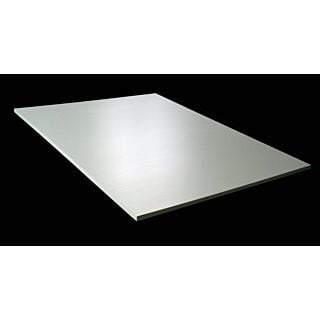Plywood
Plywood Panels at Ring's End
What is plywood?
Basic plywood is a popular and effective wood-building material created from bonding thin sheets of cross-laminated wood veneer, which are layers of wood harvested from lumber. Plywood manufactured this way typically have plywood panels less than 3 mm in thickness. Multiple veneers and plywood panels may be wood bonded together through the use of extreme heat, strong glue or adhesives, and high pressure.
Similar to other engineered wood products, plywood can be cut into different shapes and comes in a wide variety of thicknesses, styles, and weights. Applications include use as wall framing, structural support, subflooring and flooring applications, doors, parts of furniture, and more.
Plywood is favored for building due to its high strength to weight ratio, extreme resistance to impact damage and cracking, and ability to withstand intense changes in both temperature and humidity. It does not warp from exposure to moisture as easily as other wood materials and engineered wood products.
What is a “ply”?
A ply is a single layer of veneer. Multiple thin layers are needed to create a single piece of plywood. The higher ply a sheet of plywood is labeled, the more layers it has. Even if two pieces of plywood have the same overall thickness, the more plies in the plywood, the stronger the board will be.
What are different ply levels?
There are typically three different types of ply:
- 3-ply plywood boards are lightweight and affordable. They are typically between two and 3 mm thick and are often used for indoor construction projects.
- 5-ply plywood is more versatile and pieces are around 4 mm thick. They can be used for both indoor and outdoor projects but are not the best for framing permanent structures or home attachments.
- Multi-ply plywood is any piece that includes seven or more layers. Multi-ply plywood has more durability, is long-lasting, and has enough stability enough to be used for roof framing or other exterior projects.
Plywood options, grades, and sizes - baltic birch plywood, hardwood plywood, softwood plywood, and more
Plywood comes in a variety of types or grades
Sanded plywood has top and bottom of pieces that are sanded down for additional smoothness. Builders don’t have to apply additional sanding. Some pieces may have extra finishes applied to improve their appearance or to add water or rot resistance.
Softwood plywood is often used in construction since it is readily available and offers some pliability. Softwood plywood is usually sourced from pine, fur, and spruce woods.
Hardwood plywood is made from hardwood lumber harvested from tree species such as maple, oak, and birch plywood. Hardwood plywood is strong and stable but may be heavier than other types. Hardwood plywood is best suited for projects that need more durability or rigidity.
Sheathing plywood is designed for use in permanent structures. It is affordable and quite strong but its end uses are limited. It does not feature finishing and is not meant to be seen by building inhabitants.
Project panel plywood sheets are ready to be cut into different shapes and are ideal for DIY projects. This plywood can be made from multiple kinds of wood and may or may not include a finish.
KLEER PVC sheets are an alternative to traditional plywood that offer the beauty of custom wood millwork without the ongoing upkeep and maintenance. They are perfect for corbels, mouldings and any custom PVC millwork.
How do I know which plywood to choose?
It's important to choose the right plywood for your project. For example, hardwood plywood is great for furniture making, shelving, and other projects that would benefit from being rigid and extremely strong. Softwood plywood is often used in construction, subfloor, and even concrete forming. You can sort for different wood types using the categories above, then find the ideal item for your needs.
What are the top plywood sizes for selection?
Plywood comes in a variety of sizes. Many common panels are available in 4’ x 8x dimensions. Other popular plywood sizes include 2’ x 4’, 4’ x 4’, 2’ x 2’, 2' x 8', 4’ x 9’, 4' x 8' and 4’ x 10’. However, plywood can also be cut into different dimensions depending on what’s needed for your project.
Plywood Prices and Delivery
How much does a sheet of plywood cost?
Plywood panels vary in cost depending on the type of wood or material, size, thickness, grade, and more. Ring's End plywood products range in price from $24.00 to $240.00, with KLEER PVC sheets ranging from $250.00-$500.00.
Is plywood delivery available from Ring's End?
Yes. Any plywood item we offer can be delivered to your in-network home or jobsite at a flat delivery rate of $20 for orders under $500, or for free if your order exceeds $500. Delivery takes between 5-7 business days depending on the size of your order items and your home's distance from one of our stores.
Where does Ring's End deliver plywood?
We deliver plywood to all in-network locations covering most of Connecticut, portions of Westchester County, NW and select areas in Rhode Island. For a complete map of eligible areas, click here.


